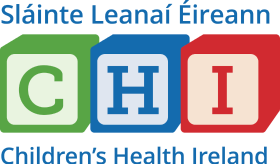Heel pain in children (Sever’s Disease)
Sever’s disease is a common cause of heel pain in children and young teenagers. It happens when the Achilles tendon (the tendon at the back of the ankle) pulls on the growth plate at the back of the heel bone (the calcaneus). This pulling causes pain and inflammation, especially during sport. It is not a disease in the harmful sense – it is more like a growing pain that happens when children are going through a growth spurt.
Who gets it?
- Children aged 8–12 years (girls) or 10–14 years (boys).
- Active children who play high-impact sports like football, running, or gymnastics.
- Children with tight calf muscles.
- Children with low vitamin D levels.
What are the symptoms?
- Pain at the back of the heel, especially where the Achilles tendon attaches.
- Usually affects one heel, but can affect both (not always equally).
- Worse after sports, running, or long walks.
- Can be triggered by flat shoes.
- The heel may be tender or swollen.
- Usually gets better with rest.
How is Sever's Disease diagnosed?
A doctor can usually diagnose Sever’s disease from the symptoms and a simple examination. X-rays are rarely needed, unless there are unusual symptoms or to rule out other causes.
Can my child still play sports?
Yes, your child can keep playing if the pain is manageable. However, they may need to reduce or modify activities (e.g. switch to swimming or cycling) during flare-ups.
It is important to know that this condition is temporary. It will get better over 12–24 months as your child finishes their growth spurt.
For GPs: Treatment and referral recommendations
Treatment:
- Pain relief: Ibuprofen or paracetamol as needed.
- Ice packs: Especially after activity.
- Gel heel pads: To cushion the heel and reduce irritation.
- Stretching exercises: Especially for the calves and foot.
- Vitamin D check: Treat if levels are low (aim for over 50 nmol/L).
- Activity changes: Avoid high-impact sports when symptoms are bad.
Aggravating factors:
- Tight calf muscles (gastrocnemius) and tight plantar fascia.
- Low vitamin D levels.
- High-impact or repetitive activities like running and jumping.
Referral:
In the following cases, a child may need to be referred to an orthopaedic specialist.
- Constant or worsening pain, even at night or when resting.
- Pain in other parts of the leg or foot.
- Fever, feeling unwell, or swelling in joints.
- Sudden injury or inability to walk.
- A visible bump or gap in the Achilles tendon.
Summary
- Sever’s disease is a common, temporary cause of heel pain in children.
- It is due to strain on the heel’s growth plate during growth and sports.
- Rest, stretching, heel pads, and vitamin D help manage symptoms.
- Most children grow out of it without needing scans or treatment.

